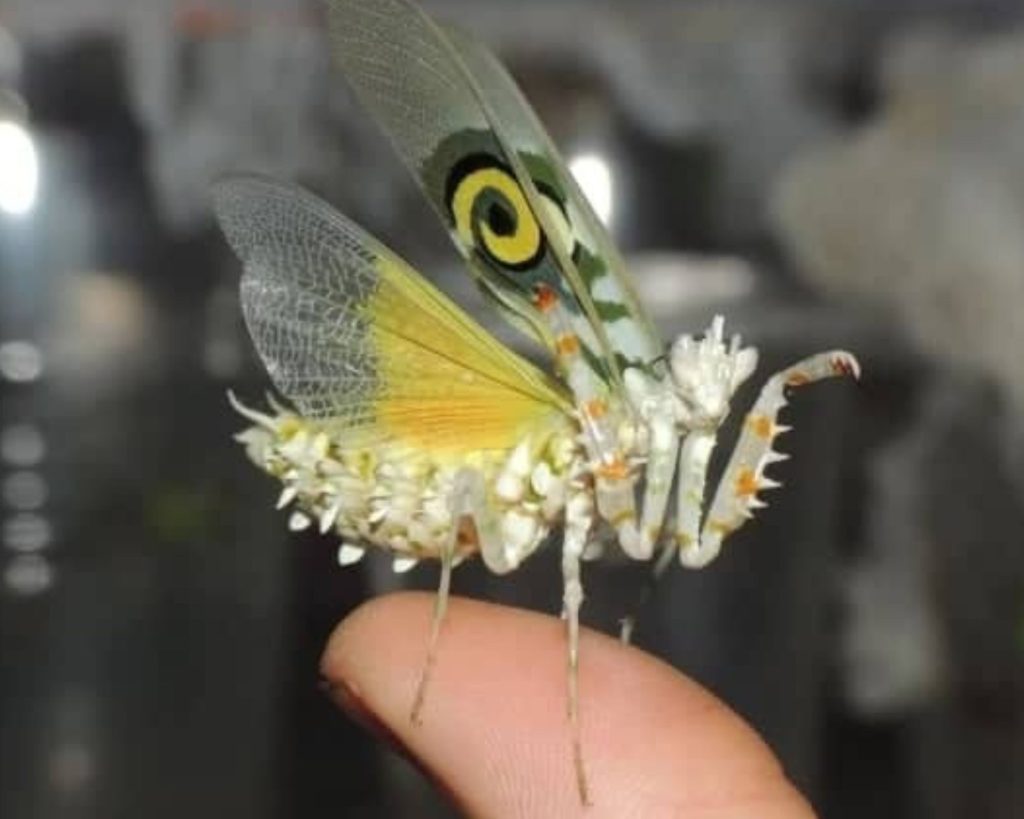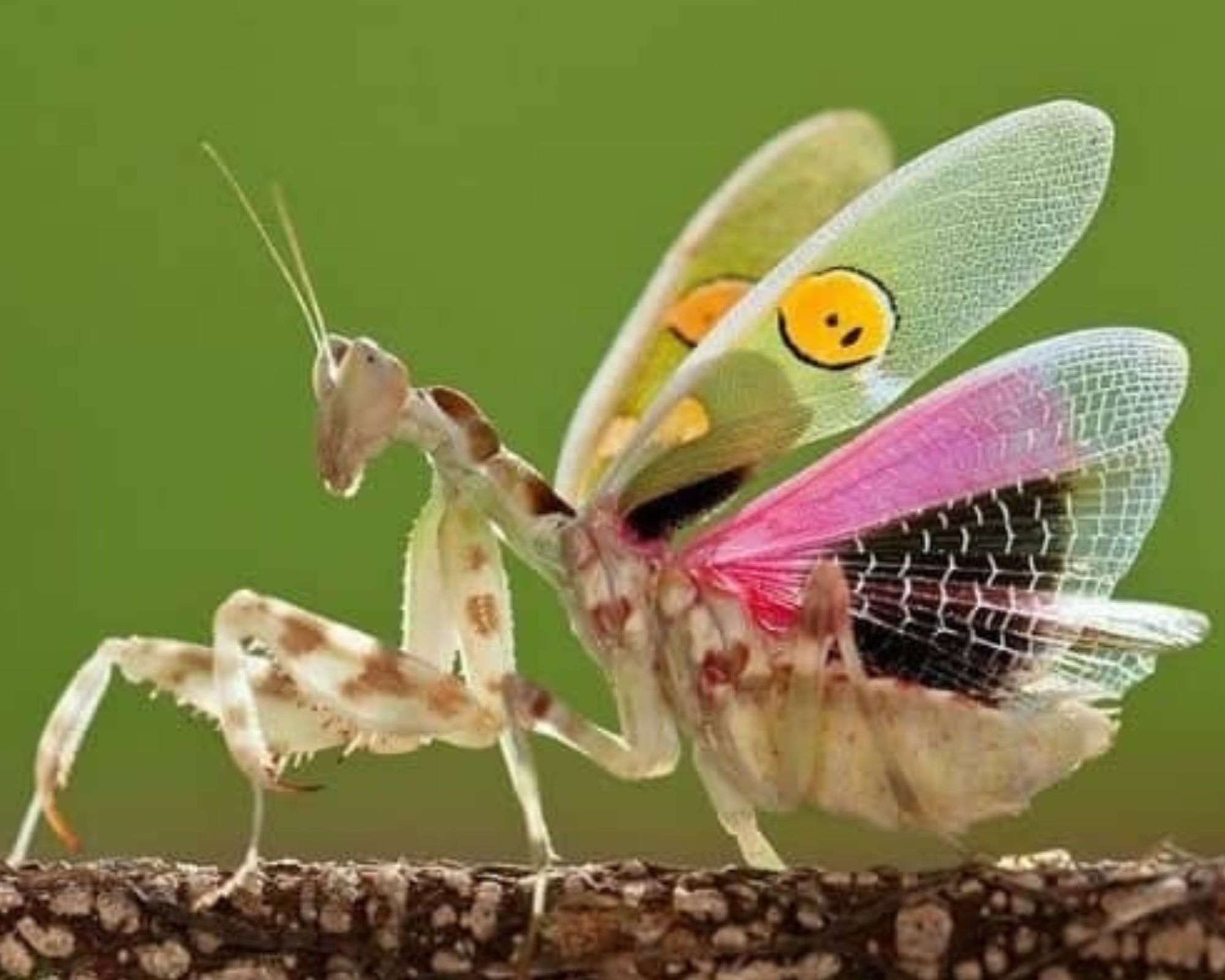The Spiny flower mantis (Pseudocreobotra wahlbergii Stål, 1871) is a species belonging to the order Mantodea, whose showy livery recalls that of the Asian species of the genus Creobroter Westwood, 1889.

It is hypothesized that this order is cognate with the Blattaria and the Isoptera, which have an asymmetrical male reproductive system and a reduced ovipositor. Because the wings have a reticulum of secondary alar veins that recalls the fishing nets from the old Greek “v” (dictyo), that is, net, this subset of insects known as Polineotteri is classified as Dictyoptera. Polineotteri is equipped with numerous veins in its wings, and Orthopterida has straight wings.

The title “Mantodea,” which means ” prophet, ” relates to the posture that individuals acquire when resting. In this posture, they fold their powerful raptatory fore legs in a seemingly mystical position. They are dangerous predators when they wait in an ambush.

The name of the genus Pseudocreobotra is derived from the Greek words “pseudo” (meaning “false”) and “kreas” (meaning “meat”), and “broter” (meaning “devourer, eater (carnivore)), therefore the name of the genus Creobroter.” Pseudo comes from the Greek word “psudés,” which means “similar,” and “kreas,” Because it has a generic name, we can deduce that it is a knockoff Creobroter. The specific name wahlbergii, which means “of Wahlberg” in Latin, honors the memory of Johan August Wahlberg (1810-1856), a Swedish naturalist and explorer. It resembles the species that belong to this genus, but it is not one of them.

There are around 2400 species of terricolous Mantodea, and their lengths range anywhere from 2.5 to 16 centimeters. The body is elongated, and there is frequent homochromy; in many alien species, the colored liveries accentuate the effect of their fearsome attitude to drive away the competition. The head is relatively small and movable and possesses developed compound eyes and three ocelli. The antennae are somewhat lengthy and filiform in shape. Mastication occurs in this mouthpart with short, powerful, and rather lopsided mandibles.
The first segment of the-thorax is longer than the others. At the same time, it is typically narrow in many species and may be laterally extended in others. The forewings of some species are shorter, thinner, and more sclerified than the hindwings, which are faster overall. The abdomen is broad and flattened, with two terminal cerci that the females use to construct the oothecas. The male reproductive organ is asymmetrical in structure. The vast majority of species, widespread in warm and temperate zones, have a diurnal activity pattern; however, some are drawn to the night lights.

Native to southern and eastern Africa, coupled with the congener Pseudocreobotra ocellata, the species Pseudocreobotra wahlbergii is highly widespread there. As a-result of the ease with which it is conceivable to cultivate it in terraria, it is frequently traded for recreational purposes in various places. Ecology-Habitat, The Spiny flower mantis, prefers habitats with daytime temperatures ranging from 25 to 30 degrees Celsius and nighttime temperatures that do not drop below 18 degrees Celsius, together with a relative humidity of approximately 60 percent.
Despite the dangers, the males approach the females and gingerly carry themselves on their spouse’s backs, where they remain for some time before attempting to mate. Females that have successfully reproduced deposit their eggs on the branches of the plants in which they hide to ambush their victim. The length of the cylinder-shaped ootheca is around 4 centimeters. A fluid that creates a soft foam is expelled from the vulvar opening with the eggs to produce it. This is made possible by the mechanical action of the valvae of the outer female genitals, which move in a rhythmic pattern.

The egg’s elongated appearance is that the female moves forward slowly while releasing the foam that both encases and separates the eggs as she does so. After 30–40 days of incubation, the ootheca, the exterior section of which quickly hardens, gives birth to the newborn neanids, which remain gregarious for a few days before dispersing while hunting for prey. During this time, the infant’s needs are gregarious. After about a quarter of a year, they will enter the adult stage. Pseudocreobotra wahlbergii has many natural predators; for example, ants consume newly hatched needs, while amphibians, reptiles, birds, and mammals feed on later stages of the parasite.



Could you go and check my other article also?










